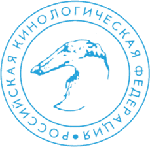О сайте. Российский офтальмологический журнал официальный сайт
Russian Ophthalmological Journal! С января 2014г. Российский офтальмологический журнал принимает публикации наших зарубежных коллег.
Уважаемые коллеги!
Сообщаем Вам, что с января 2014 года Российский офтальмологический журнал начал постепенный переход на международный формат.
В новый состав редакционного совета вошел ряд ведущих зарубежных специалистов по офтальмологии и смежным дисциплинам.
Начат прием публикаций от наших зарубежных коллег, их полнотекстовые публикации на английском языке будут размещаться в журнале с русским резюме. В перспективе планируется постепенный переход на полную двуязычную (русский/английский) версию журнала.
С уважением, Редколлегия.
Подписка на РОЖ здесь: Российский офтальмологический журналGeneral information «Russian Ophthalmological Journal»
Title: Russian Ophthalmological Journal (ROJ).
Original Russian title: Российский офтальмологический журнал, transliterated as Rossijskij Oftalmologicheskij Zhurnal.ISSN 2072-0076 (print version)
Category: research and pracitioners’ journal in the domains of ophthalmology and optometry. Year of foundation - 1922 (renewed in 2008). 4 issues per year, 122 A4 pages.ROJ is a leading Russian peer-reviewed journal for ophthalmologists and visual science specialists. ROJ publishes results of clinical studies and clinically relevant laboratory research, instructive case histories, literary reviews related to ophthalmology, and data on scientific events in the field.
Certificate of registration SMI PI #FS77-29898, issued October 12, 2007 by the Russian Federal Surveillance Service for Compliance with the Law in Mass Communications and Cultural Heritage protection. Abstracts of all contributions published by the Journal are available online, in Russian and English, at www.igb.ru and www.elibrary.ru. Full pdf versions of the articles (in Russian) can be obtained at www.elibrary.ru
ROJ is included in the important list of the leading reviewed scientific journals and periodicals published in the Russian Federation approved by the Higher Attestation Commission at the Russian Ministry of Education and Science. Contributions published in these journals count towards the publications required of all researchers who wish to pursue a doctor’s degree.ROJ is also included in the database of the Russian Science Citation Index (RSCI), supported by the Scientific Electronic Library (www.elibrary.ru) and in Ulrich's Periodicals Directory (Bowker Publishers), the largest database embracing the world flow of serial publications.
Editor-in-Chief
V.V. Neroev , Dr.M.Sci., Professor, Chief of Retinal Pathology Department and Director General of Moscow Helmholtz Research Institute of Eye Diseases, Russia.
Deputy Editors-in-Chief
L.A. Katargina , Dr.M.Sci., Professor, Chief of Pediatric Ophthalmology Department, Deputy Director for Science of Moscow Helmholtz Research Institute of Eye Diseases, Russia.E.N. Iomdina, Dr.M.Sci., Professor, Principal Researcher of the Department of Refraction Pathology and Binocular Vision Anomalies, Moscow Helmholtz Research Institute of Eye Diseases, Russia.
Assistant editors
D.O. Arestov , M.D., Chief of the Information Support Department, Moscow Helmholtz Research Institute of Eye Diseases, Russia.M.K. Nabieva , M.D., Researcher, Department of Eye Pathologic Anatomy and Histology, Moscow Helmholtz Research Institute of Eye Diseases, Russia.
Editorial Council
S.E. Avetisov , Dr.M.Sci., Professor, Academician of the Russian Academy of Medical Sciences (RAMS). Director General of RAMS State Research Institute of Eye Diseases; Chair in Ophthalmology at I.M. Sechenov First Moscow State Medical University, Russia.A.-G.D. Aliev , Dr.M.Sci., Professor. Chair in Ophthalmology at Dagestan State Medical Academy, Makhachkala, Republic of Dagestan, Russia.Yu.S. Astakhov , Dr.M.Sci., Professor. Chair in Ophthalmology at St.-Petersburg State I.P. Pavlov Medical University, Russia.V.I. Baranov , Dr.M.Sc., Professor. Chair in Ophthalmology at Kursk State Medical University, Russia.M.M. Bikbov , Dr.M.Sci., Professor. Director General of Ufa Research Institute of Eye Diseases, Republic of Bashkortostan, Russia.E.V. Boiko , Dr.M.Sci., Professor. Chair in Ophthalmology at St.-Petersburg Military Medical Academy, Russia.A.F. Brovkina , Dr.M.Sci., Professor, Academician of RAMS. Chief of Ocular Oncology Unit in the Department of Ophthalmology at Russian Medical Academy of Postgraduate Education, Moscow, Russia.R.A. Gundorova , Dr.M.Sci., Professor, Academician of the Russian Academy of Natural Sciences (RANS). Head of the Department of Ocular Trauma and Reconstructive Surgery at Moscow Helmholtz Research Institute of Eye Diseases, Russia.M.R. Guseva , Dr.M.Sc., Professor in the Department of Ophthalmology, Pediatric Faculty of N.I.Pirogov Moscow State Medical University, Russia.A.V. Zolotarev , Dr.M.Sci., Professor, Chief medical officer of Ophthalmological Hospital, Samara State Medical University, Russia.V.I. Lazarenko , Dr.M.Sci., Professor in the Department of Ophthalmology, Krasnoyarsk Region Ophthalmologic Clinical Hospital, Omsk, Russia.O.I. Lebedev , Dr.M.Sci., Professor. Chair in in Ophthalmology, Omsk State Medical University, Russia.E.S. Libman , Dr.M.Sci., Professor, Academician of Russian Academy of Natural Sciences (RANS). Head of Ophthalmological Department, Federal Bureau for Medical and Social Expertise, Moscow, Russia.Yu.F. Maichuk , Dr.M.Sci. Professor, Moscow, Russia.L.K. Moshetova , Dr.M.Sci., Professor, Academician of Russian Academy of Medical Sciences (RAMS), Rector of Russian Medical Academy of Postgraduate Education, Moscow, Russia.A.A. Ryabtzeva , Dr.M.Sci., Professor. Head of the Department of Ophthalmology of M.F.Vladimirsky Moscow Regional Research Clinical Institute, Russia.E.P. Tarutta , Dr.M.Sci., Professor. Head of the Department of Refraction Pathology and Binocular Vision Anomalies, Moscow Helmholtz Research Institute of Eye Diseases, Russia.L.P. Cherednichenko , Dr.M.Sci., Professor. Head of the Department of Ophthalmology, Stavropol State Medical Academy, Stavropol, Russia.N.B. Chesnokova , Dr.M.Sci., Professor. Head of the Department of Pathophysiology and Biochemistry, Moscow Helmholtz Research Institute of Eye Diseases, Russia.M.M. Shishkin , Dr.M.Sci., Professor. Head of the Department of Ophthalmology, N.I.Pirogov National Medical Surgical Centre, Moscow, Russia.
International Editors
Carl P.Herbort Jr, MD, PD, fMER, FEBOphth, Centre for Ophthalmic Specialised Care, Clinic Montchoisi & University of Lausanne, President Society for Ophthalmo-Immunoinfectiology in Europe (SOIE), Switzerland.Damian Czepita, MD, PhD, Acting Chairman of the Department of Ophthalmology, Pomeranian Medical University, Szczecin, Poland.Frederik Raiskup, MD, PhD, FEBO, Department of Ophthalmology, Carl Gustav Carus University Hospital, Dresden, Germany.Leopold Schmetterer, Head of Division of Ophthalmic Pharmacology at the Department of Clinical Pharmacology, Medical University of Vienna, Head of Division of Vascular Imaging at the Centre of Medical Physics and Biomedical Engineering, Medical University of Vienna, Austria.Paul T. Finger, MD, FACS, Professor of Ophthalmology at the New York University School of Medicine and Director of Ocular Oncology at The New York Eye Cancer Center, The New York Eye and Ear Infirmary (NYEE), Manhattan Eye Ear and Throat Hospital (MEETH), New York University School of Medicine and Beth Israel Comprehensive Cancer Center, USA.Ralph Michael, PhD, Research coordinator, Barraquer Ophthalmological Institute, Barcelona, Spain.
www.organum-visus.com
eyeNEWS — Все новости офтальмологии. Версия 6.0
Новости офтальмологии
Dry eye symptoms are experienced by many patients, especially with aging. Unfortunately, millions of patients with ocular surface disease are underdiagnosed in the United States. Being able to detect and treat dry eye disease in its early stages is becoming increasingly important. This CME activity will discuss the etiology, pathophysiology, and new methods of diagnosis and treatment for ocular surface disorders, as well as discuss clinical cases.
Are you attending WOC2018 in Barcelona? Be sure to join the WGA Symposium Glaucoma: Clinical Features and Progression on Tuesday. We look forward to meeting you there
Dr. Robert N. Weinreb Chief Editor I welcome you to the International Glaucoma Review (IGR) online. As usual, the IGR will provide you with high quality glaucoma content including the Comments in the Editor’s Selection, the Dialogue, Opinion, and news from the WGA, meeting reports, etc. With this new format, you will be able to quickly navigate the content online and obtain the information that is of interest. If desired, you also will be able to obtain more details via direct links (articles, abstracts, database, etc.).
Отличные фото с отличного конгресса Европейского глаукомного общества!
Каких-то 165 лет? )
n recent years, retinal injuries caused by laser pointers have increased significantly - especially among young people. What are the preferred imaging modalities to identify these injuries? What difficulties can be expected? What role does OCT play? In his video presentation, Ethan Priel, Director of Ophthalmology Dept., MOR Institute Israel, discusses the topic comprehensively.
Программа XI открытого заседания Межнационального экспертного совета по проблемам глаукомы стран СНГ, Грузии и Балтии 30 июня 2018 года, Бишкек, Республика Кыргызстан
Selective Laser Trabeculoplasty, or SLT, is a form of laser surgery that is used to lower intraocular pressure in glaucoma
Navigating from a young ophthalmologist to a prominent leader in eye care is no easy task. The ICO is here to help. We are proud to announce the launch of a new program that will kick off at [www.icoph.org/woc2018]WOC2018 in Barcelona this June: Emerging International Leaders Initiative.
Много новых статей о проблемах глаукомы в "свежайшем" номере журнала. Бесплатный доступ до 4 мая!
Abstract: Retinitis pigmentosa (RP) is a group of heterogeneous inherited retinal degenerative disorders characterized by progressive rod and cone dysfunction and ensuing photoreceptor loss. Many patients suffer from legal blindness by their 40s or 50s. Artificial vision is considered once patients have lost all vision to the point of bare light perception or no light perception. The Argus II retinal prosthesis system is one such artificial vision device approved for patients with RP. This review focuses on the factors important for patient selection. Careful pre-operative screening, counseling, and management of patient expectations are critical for the successful implantation and visual rehabilitation of patients with the Argus II device.
True papilledema or pseudopapilledema? Differentiating between these entities in children based on noninvasive imaging would be greatly preferable over an invasive neurological examination – the current gold standard. The authors of a recent study investigated whether the SPECTRALIS® MultiColor Module is helpful to make this distinction. Taking MultiColor images from the optic nerve head of 20 consecutive patients delivered very promising results.
With plans well underway for SOE2019 we are pleased to share our confirmed Key note Lectures which cover the breadth of Ophthalmology and are just some of the jewels in our treasure chest that is our Scientific programme. We look forward to welcoming you to the next European Congress of Ophthalmology in Nice from 13–16 June 2019. Along with a selection of the best lecturers in the world who will share every conceivable aspect of ophthalmology, our YO Committee will provide specific YO activities and sessions and the most recent state-of-art equipment and devices will be on display at the exhibition. We look forward to seeing you in Nice in 2019! Jan Tjeerd de Faber SOE President
The WGA aspires in becoming the most important source of education for ophthalmologists and other healthcare providers related to glaucoma. In becoming a knowledge platform, the association offers access to the Educational Portal that includes recorded sessions from past WGC’s. Click below to watch the recorded sessions of our past Congresses. WGC-2013 and WGC-2015 content is available for all. The sessions recorded during the 7th WGC will only be available for registered participants and will be released on a monthly basis via the different WGA media channels. WGC-2017 content is only available to WGC-2017 attendees. WGA will share several WGC-2017 sessions the upcoming year via WGA media channels. Do not miss out and subscribe to the WGA newsletter!
Many patients inquire about the use of marijuana for their uncontrolled glaucoma, especially in the setting of increased legalization in many states. In this article, Dr. Graul discusses various limitations of this Schedule I drug for long-term treatment of glaucoma, including its short duration of action, cost, ocular side effects, general health risks, and high potential for abuse. BY THOMAS A. GRAUL, MD
What has been your most successful collaboration? Without a doubt, working with Don Budenz; we’ve had enormously successful collaborations dating back more than 20 years. I owe the majority of my H-index to Don’s relentless hard work in research. We started working together in 1996 with the first use of amniotic membrane transplantation in glaucoma surgery, initially in rabbits and subsequently in a human randomized controlled trial. After that, we collaborated – or rather, Don did all the work and I helped! – in the ABC study (which we co-chaired), the Tema Eye Survey and the Tema Eye Survey II. In between, we were both investigators in the TVT and PTVT studies. Parenthetically (and outside of Ophthalmology), Don’s wife, Sue, rescued my 19-year-old son from a crack house in Chapel Hill!
Программа и анонс!
8 пленарных сессий, 48 курсов, 495 постеров, 21 баллов (кредитов, для ЕС), 600 кв м выставочной площади и более 2200 зарегистрировавшихся участников!!!
Отличный подарок!
by Mark Gallardo, MD Channels: Glaucoma Mark Gallardo, MD, discusses strategies to determine which microinvasive glaucoma surgery (MIGS) device is the best fit for a specific patient. During his presentation, Dr. Gallardo also shares his personal data and advice on using the iStent Trabecular Micro-Bypass Stent (Glaukos).
www.eyenews.ru
Офтальмологический портал портал OFTHALM.ru
Офтальмология – это наука, занимающаяся изучением заболеваний органов зрения (глаз).
Истоки возникновения науки о глазных болезнях уходят в далекое прошлое – в Древний Мир. Древнеегипетский лекарь Пепи Анк Ири, который проживал во втором тысячелетии до нашей эры, считается первым глазным доктором, который успешно лечил патологию органов зрения.Еще до нашей эры были известны такие болезни, как: катаракта, косоглазие, глаукома, нистагм, – во многом, благодаря древнегреческому ученому Гиппократу. Аристотель и Платон предложили свои теории зрения. Корнелий Цельс описывал в своих трудах методики проведения операций на глазах. Особый вклад в развитие офтальмологии внес Гален, описав многие заболевания органов зрения.
В начале первого тысячелетия бурное развитие медицины отмечалось в арабских странах. Здесь появились систематизированные руководства, в которых описаны анатомия и физиология органов зрения, заболевания и методы их лечения. Наиболее известный труд («Медицинский канон») принадлежит Авиценне, также были изданы такие труды как «Книга о глазе в десяти беседах», «Сокровище оптики», которые посвящены исключительно органам зрения.
В Средневековье из-за большого влияния церкви развитие всех наук (включая медицину) резко затормозилось. Вплоть до Нового Времени (XVII) века неоспоримым авторитетом являлись труды древнегреческих и арабских врачей и ученых.Большим открытием явились исследования астронома XVII века И. Кеплера, который впервые предложил рассматривать глаз в качестве оптической системы. Он считал, что проходя через хрусталик, световые лучи преломляются и проецируются на сетчатке в виде обратного изображения. Кеплер обосновал такие явления, как дальнозоркость и близорукость.
Новое и Новейшее время характеризуется бурными темпами развития офтальмологической науки, что связано с такими именами, как Ж. Давиэль, Г. Гельмгольц, А. Грефе, Ф. Дондерс.
XX век подарил новые направления в диагностике и лечении глазных заболеваний, появились электрофизиологические и ультразвуковые методы исследования, флюоресцентная ангиография сосудов сетчатки, лазерная хирургия, микрохирургия и др.
О современном взгляде на проблемы зрения и рассказывает наш сайт.
ofthalm.ru










